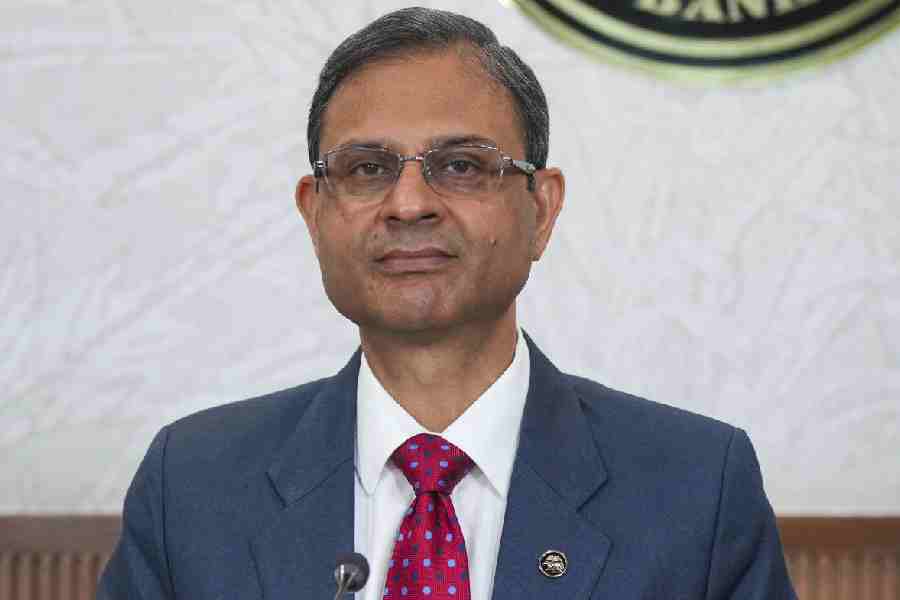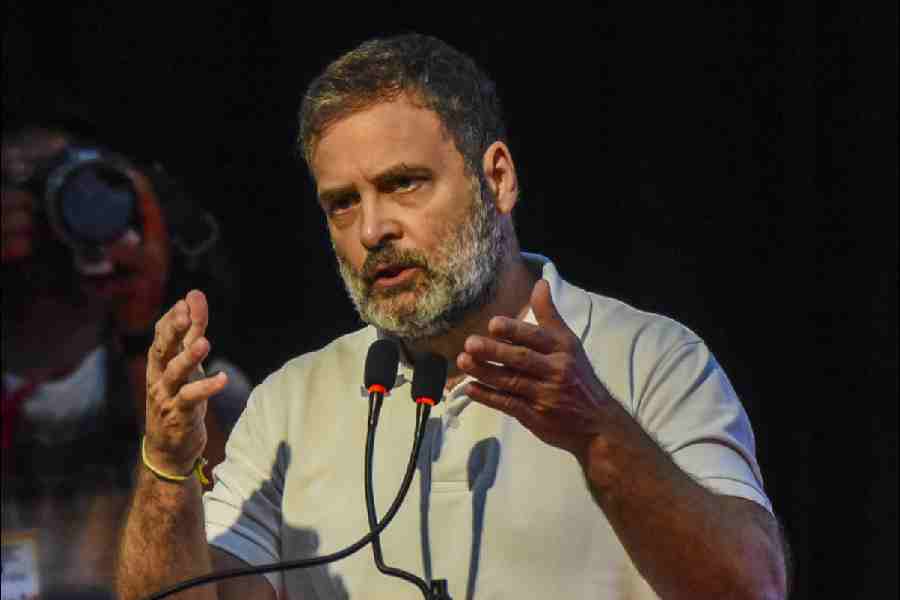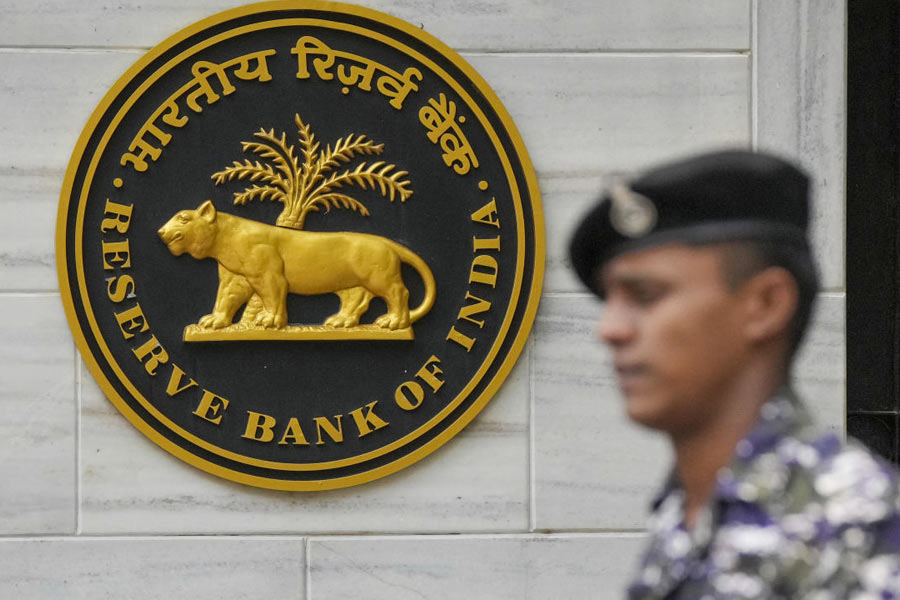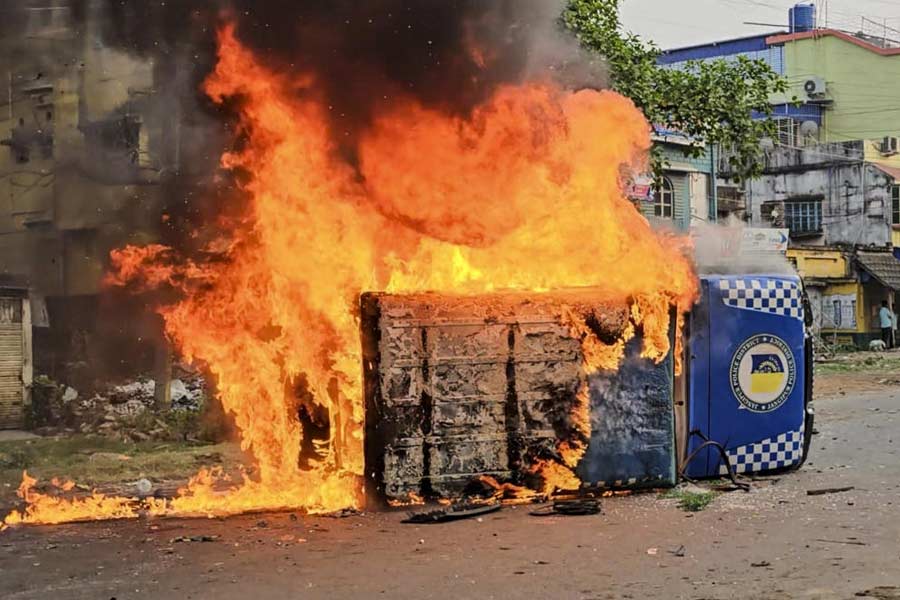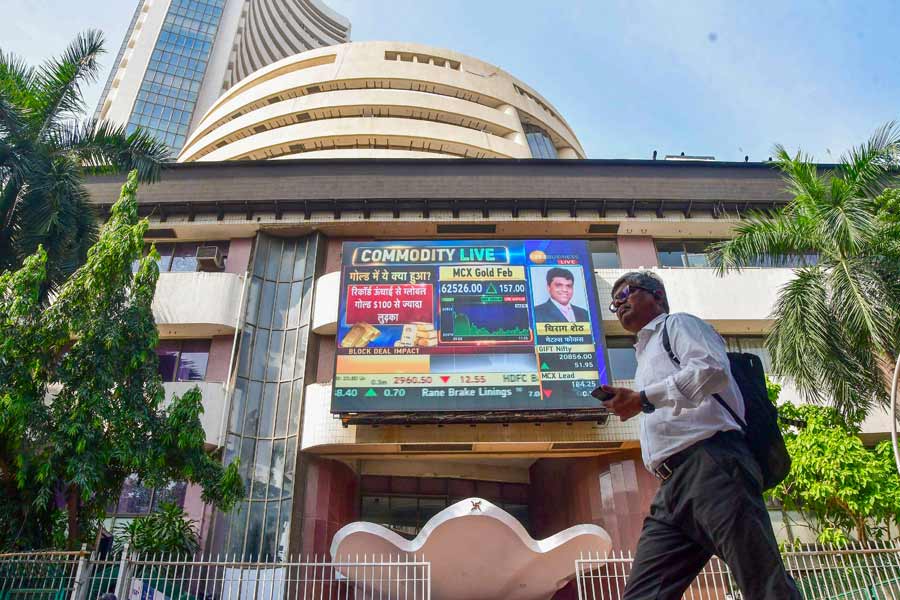
Guwahati, Aug. 30: The National Highways Authority of India (NHAI) is eyeing March 2016 as the date for completion of the second bridge over the Brahmaputra at Saraighat along with the connecting six-lane flyover at Jalukbari here.
"The 1.49km single girder bridge over the Brahmaputra and the 244metre six-lane grade separator (flyover) linked to the existing bridge as well as the new bridge at Saraighat, will be completed by March next year. The signal-free intersection will be even better than the one near All India Institute of Medical Sciences in New Delhi," Raj Chakrabarty, chief general manager and regional officer (Northeast region), NHAI, told The Telegraph today.
"The only unsettled issue is the part of land under possession of Jalukbari police outpost, which has slowed down construction of loop 3, a part of the signal-free crossing. We have already paid compensation for the same though," Chakrabarty said.
Three lanes of the flyover connecting the existing bridge were opened to traffic this morning.
The move comes as a reprieve for commuters who regularly negotiate the otherwise snarl-hit intersection.
"Twelve lanes from four directions - Maligaon, bypass (NH 37), Gauhati University and Amingaon - merge at Jalukbari point. So, with the opening of three lanes of the flyover, the flow of traffic at the intersection should be eased by at least 15 per cent," P.J. Goswami, deputy commissioner of police (traffic), Guwahati, said.
NHAI had in 2010 entrusted Gammon India Ltd to construct the bridge, which connects the city's north and south banks, and the flyover.
The bridge is being constructed around 40m south of the existing bridge at Saraighat. The then Prime Minister Manmohan Singh had laid its foundation in April 2007.
"The bridge rests on 13 piers and is one among a few in the country equipped with shock transmission units fixed at requisite points. This feature makes the bridge a safe structure, one suitable for a region prone to earthquakes," the NHAI official said. The second bridge is a part of the East-West corridor project. The total length of the East-West corridor in Assam is 668.62km, of which 637.62km is being implemented by NHAI.
The initial cost of the project was to the tune of Rs 238.34 crore. However, the cost increased by Rs 110 crore with additional work comprising a signal-free crossing with three loops, three ramps and three bridges (covering 565m).
"Gammon was entrusted with the additional work in September 2010. There was a delay for the additional work coupled with the time taken for acquisition of land belonging to Gauhati University and the necessary permission for construction," Chakraborty said.
"Besides, the time taken for acquiring permission for extraction of forest-based products such as sand among others led to further delay. Besides, extra care had to be taken as the two bridges are close to one another and there are OIL pipelines in proximity as well," the NHAI chief general manager said.
Sources in the construction firm said work on a 300-metre stretch of the bridge was pending. "The strong river current during the rainy season has affected work. But once the dry season sets in, the pace will accelerate," said Debi Charan Bora, supervision consultant of the project.


